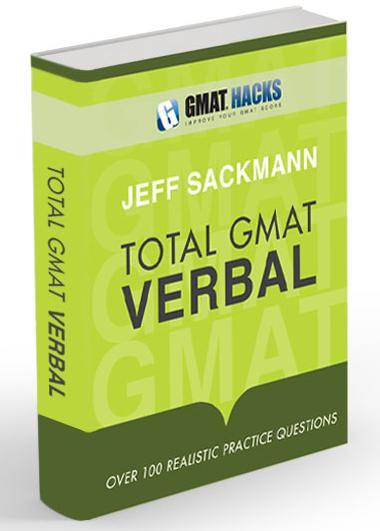
Bookshelf
|
|
Total GMAT Math Jeff's complete Quant guide, on sale now! |
|
|
Total GMAT Verbal Everything you need to ace GMAT Verbal! |
1,800 Practice Math Questions
Buy Jeff's books at Amazon.com

GMAT Official Guide, with IR
OG Math | OG Verbal
OG12 & Quant Rev solutions!
GMAT Question of the Day
Beginner's Guide to the GMAT
GMAT Hacks Affiliate Program

Recent Hacks

Categories
- General Study Tips
- Goals and Planning
- CAT Strategy
- The Mental Game
- GMAT Math Strategy
- GMAT Math Topics
- Mental Math
- Data Sufficiency
- Critical Reasoning
- Reading Comprehension
- Sentence Correction
- Analytical Writing Assessment
- Integrated Reasoning
- IR Explained
- Business School Admissions
- GMAT Prep Resources
- Practice Questions
- Total GMAT Math
- Total GMAT Verbal
- GMAT 111

IR Explained: Q31: Internet Usage
August 20, 2012
| You should follow me on Twitter. While you're at it, take a moment to subscribe to GMAT Hacks via RSS or Email. |
This post is part of a series--IR Explained--that walks through the sample Integrated Reasoning questions provided in the latest edition of the GMAT Official Guide.
In any Graphics Interpretation question, take a moment to understand all the components of the graphic.
Here, a line graph and a bar graph are shown on the same grid. The line graph represents world population and corresponds with the labels on the right side of the grid. The bar graph represents internet users and corresponds with the labels on the left side.
Both graphs represent a time period between 2001 and 2010, inclusive, with one data point for each year.
31A asks for a percent increase, for internet users from 2002 to 2007. Remembering to use the left-hand labels, note that there were about 700 (million) users in 2002 and 1,400 in 2007. The number doubled.
When an amount doubles, that's a percent increase of 100%. In mathematical terms, percent increase is given by change divided by original: (1400-700)/700, times 100%, or 700/700 = 1, times 100%.
31B involves more steps. To calculate how much the number of users per 100 people increased over a time span, you need to know the approximate number of users per 100 people at the beginning and endpoints of that span.
In 2000, there were roughly 400 (million) users out of 6100 people. In 2010, the corresponding numbers were 2100 and 6900.
Use the on-screen calculator, but keep things simple by aggressively approximating. No need to keep track of numbers to the third decimal place. 400 of 6100, or 4 of 61, is roughly 1 in 15, or 7 per 100. 2100 of 6900, or 21 of 69, is a bit less than 1 in 3 (that would be 23 of 69), so call it 30 per 100.
The increase, then, is from 7 per 100 to 30 per 100, or approximately 23 per 100. The only answer anywhere close to this is 24, which is correct.
Stay tuned (or subscribe) for more Integrated Reasoning explanations
About the author: Jeff Sackmann has written many GMAT preparation books, including the popular Total GMAT Math, Total GMAT Verbal, and GMAT 111. He has also created explanations for problems in The Official Guide, as well as 1,800 practice GMAT math questions.
 |
Total GMAT Verbal
The comprehensive guide to the GMAT Verbal section. Recognize, dissect, and master every question type
you'll face on the test. Everything you need, all in one place, including 100+ realistic practice questions. |